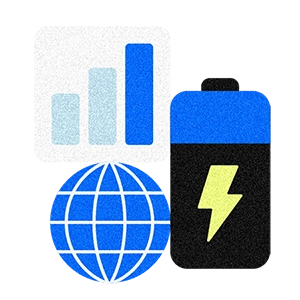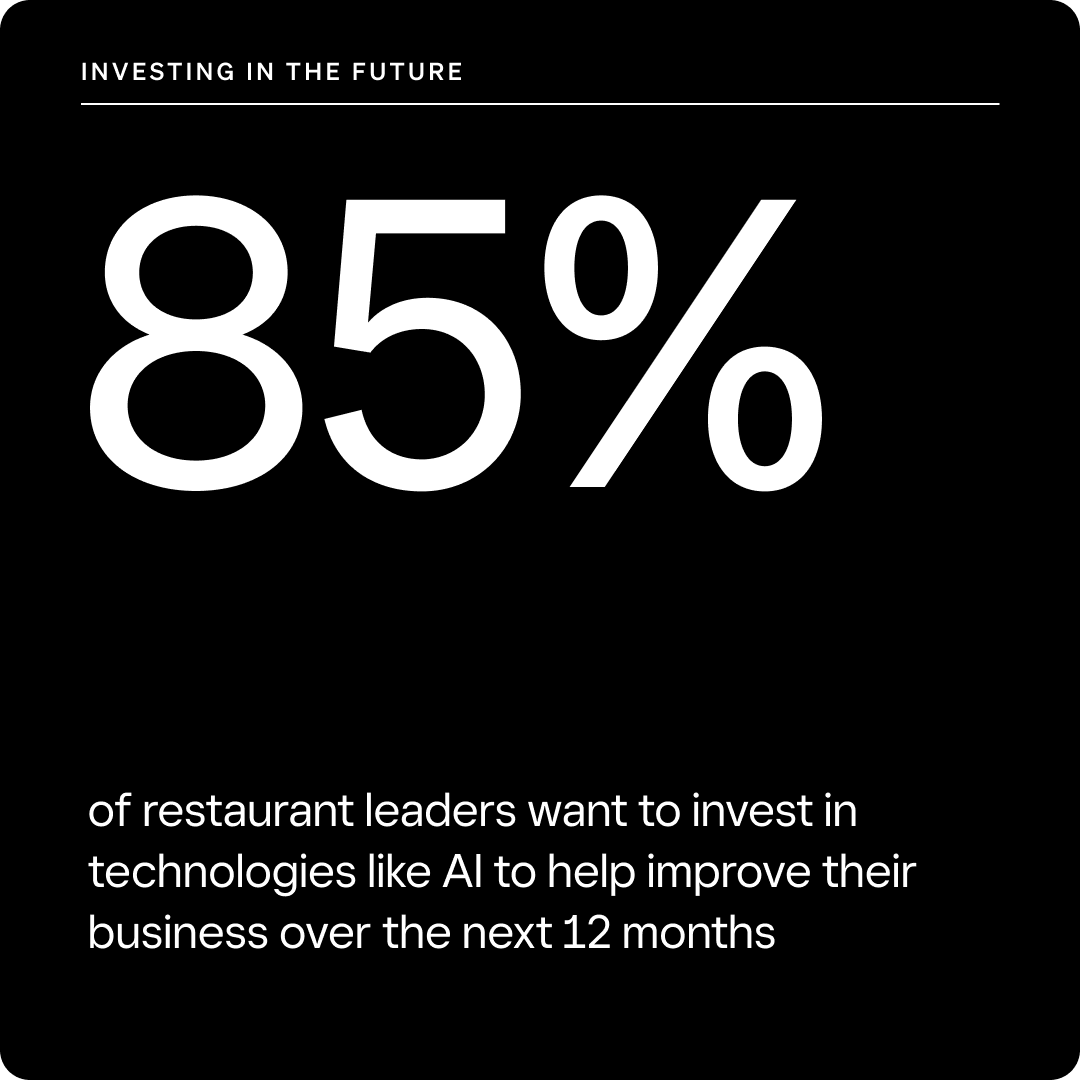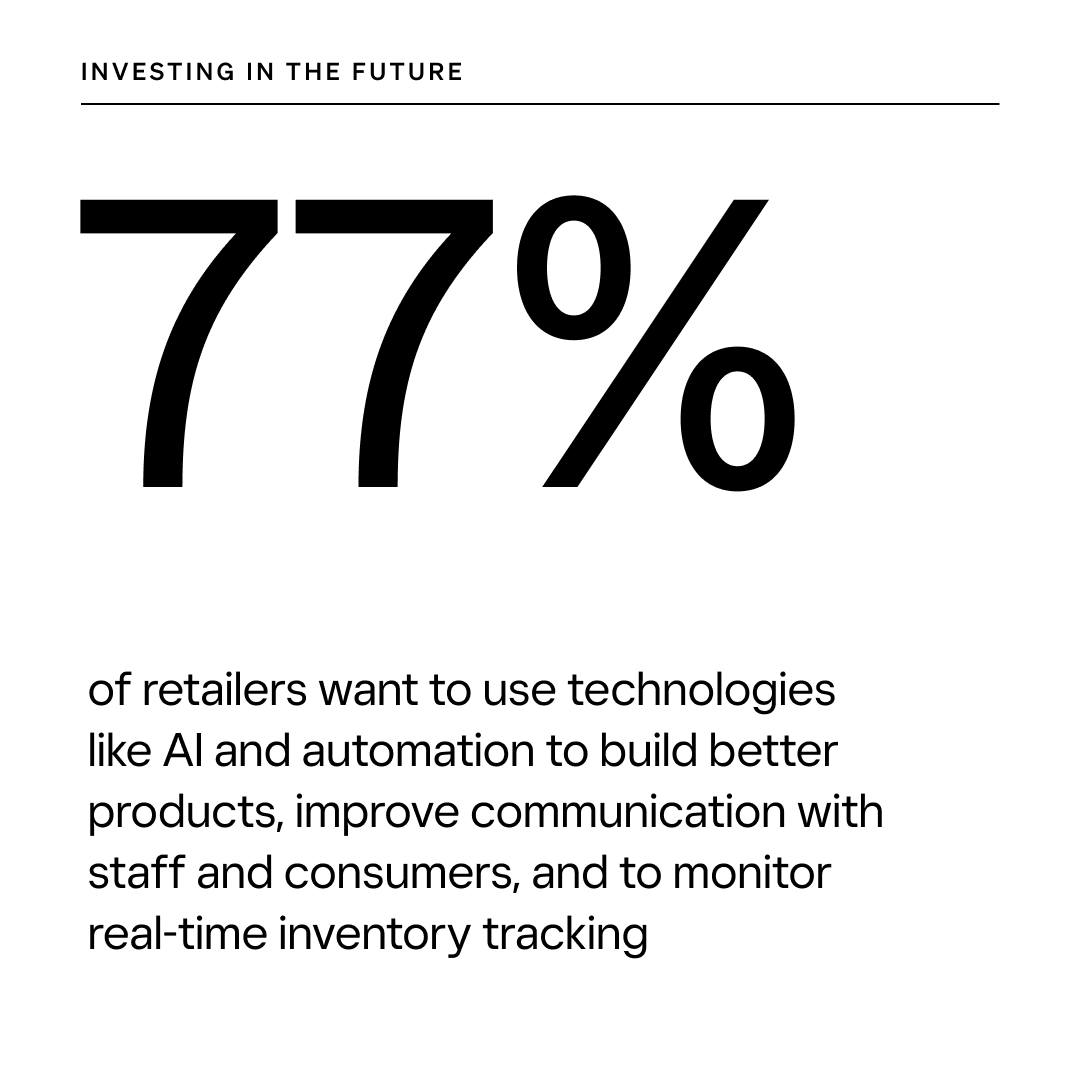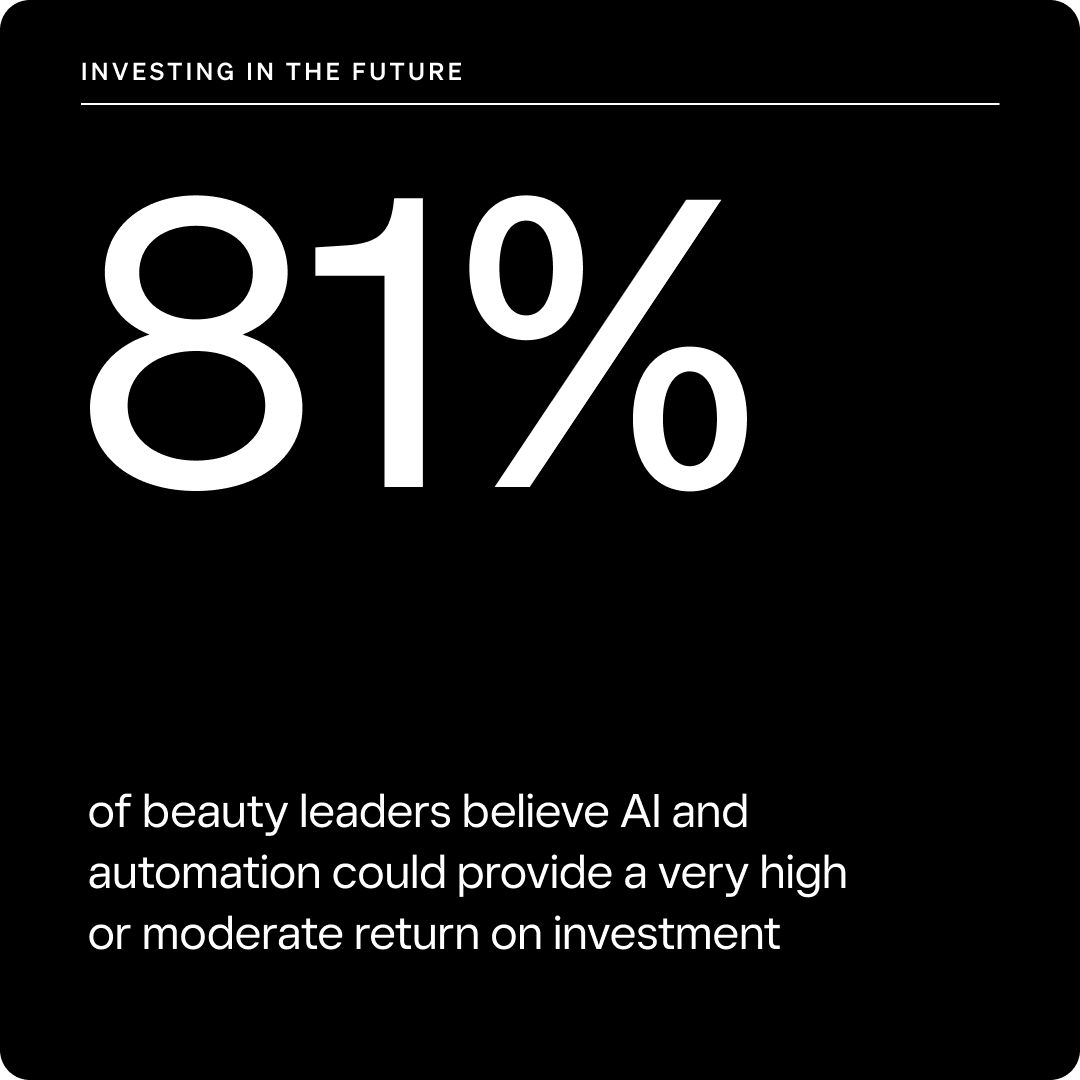Table of contents
Running a business today means wearing every hat, but that often leaves business owners struggling to keep up instead of getting ahead. That’s where AI steps in. From building smarter staffing schedules to uncovering sales trends, AI is creating valuable efficiencies for businesses across industries.
And rather than attempting to replicate the human touch, AI tools are giving time back to focus on customers. Outside of widely used commercial generative AI tools (think OpenAI’s ChatGPT, Anthropic’s Claude, and Google’s Gemini), savvy business operators are now also using AI tools which are directly integrated into their business software, with safe access to their data, revealing key insights which commercial AI tools can’t.
I desire less friction in all business processes, and so do customers.”
Alicia Jones → Owner of Peint
Meet Square AI
Square AI, now available in public beta for all U.S. Square businesses, is a conversation-based AI assistant integrated directly into your Square Dashboard. You can ask Square AI about your sales, customers, and staff, and it quickly analyzes your relevant business data to provide the answer. It saves you from trying to track down the right report, learning how to set the proper filters, or spending time combing through rows of data in order to make informed business decisions.
Square surveyed 6,000 business owners and managers and 4,000 consumers across beauty, retail, and restaurant industries for the 2025 Future of Commerce Report. Square business owners using Square AI, and other generative AI solutions, were also interviewed to shed light on the top areas you can be using AI in your own business today.
Spoiler alert: The results point toward a future in which entrepreneurs rely on automation, AI, and other technological tools to increase productivity and unlock growth.
How are businesses using AI today?
Across the beauty, retail, and restaurant industries, the a majority of business owners told Square they’re already using AI or are thinking about testing it in the next year.

And these business decision-makers completely agree on the tasks that have become too time-consuming for them. Social media and marketing are tops among jobs that owners want to hand over to an AI assistant, perhaps because it’s easy to track lost hours posting online while battling challenging algorithms.
That trend bears out in other data. Recently, the US Chamber of Commerce reported that two in five small businesses are already using generative AI. Of those, 51% use AI for their marketing and 38% use AI to manage customer relationships, up 10% from the previous year.
Creating marketing content
If you’re a business owner who is less confident with your own writing skills, getting an AI assist can improve social media posts and marketing materials, delivering a clean, concise message optimized for the appropriate channel. AI tools can also analyze engagement data and create a schedule to maximize your channel’s effectiveness.
70%
of business leaders across beauty, retail, and restaurants see AI and automation improving their marketing operations over the next 12 months.
Entrepreneurs like Jacqueline Mull, owner of Jackie’s Uniquely U Boutique in Anchorage, Alaska, say AI-produced content not only saves her time but helps find the proper tone for her posts. “It helps me get my words together in the way that I want to portray them,” she says.
How businesses can save time with AI now
- Creating marketing content: Generative AI tools can help write clear messages for emails, blog posts, social media and more, while managing scheduling for optimized results.
- Better inventory decisions: Get real-time data on your product performance, as well as what’s about to go out of stock. Manage and adjust inventory across locations, from anywhere.
- Streamlined customer engagement: Analyze your top customers and their preferences at scale. Utilize advanced pattern recognition to get the most out of new and repeat traffic, while tailoring experiences and offers to the individual.
- Optimized staff schedules: Reduce the notoriously time-consuming task of managing shifts by utilizing AI to quickly navigate employees’ conflicting availabilities. Ensure shifts coincide with peak times to keep up with customer demand and manage labor costs more effectively.
- Orders and appointment scheduling: AI can walk customers through the details of online purchases or service needs while you’re serving customers in your physical store.
Analyzing customer data
Rather than taking on the additional burden of learning complex statistical analysis techniques, business operators instead see the value in letting technology take the first pass at analyzing their data. Some AI tools are able to break down the information and provide insights and recommendations, allowing business operators to make quick, well-informed decisions without spending hours in spreadsheets. This includes adjusting staff schedules to meet customers’ demands, while managing labor costs more effectively. Seventy-five percent of restaurateurs surveyed in Square’s Future of Restaurants report believe AI and automation will improve their staff management.
“I use AI to look at my analytics like a business consultant would. It helps find places I can improve or let go of,” says Doran Poma of Haute Beauty Guide.
Managing inventory
Restaurants rise and fall based on how well they use real-time information. Making sense of slow vs. peak time periods to help guide promotional offers and use predictive technology to deliver personalized upsells is just one example.
According to the same report, 77% of restaurateurs believe AI will improve their inventory management. The benefits include detailed tracking of popular items, such as when they’re popular or with which subset of customers, as well as analyzing ideal stock levels for less popular items, striking the balance between meeting demand and avoiding spoilage.
Automating the gaps
Local business leaders will try out new technology that frees them to focus on the face-to-face interactions that customers crave. And customers are embracing technology for the same reasons. Seventy-four percent of restaurant customers said they want automated tasks to offset gaps left when establishments are not fully staffed.
Consumers have taken to the smoother operations technology can facilitate, including ordering food at a kiosk or on a mobile app. Such automated processes speed the service time, while helping to ensure orders are fulfilled accurately.
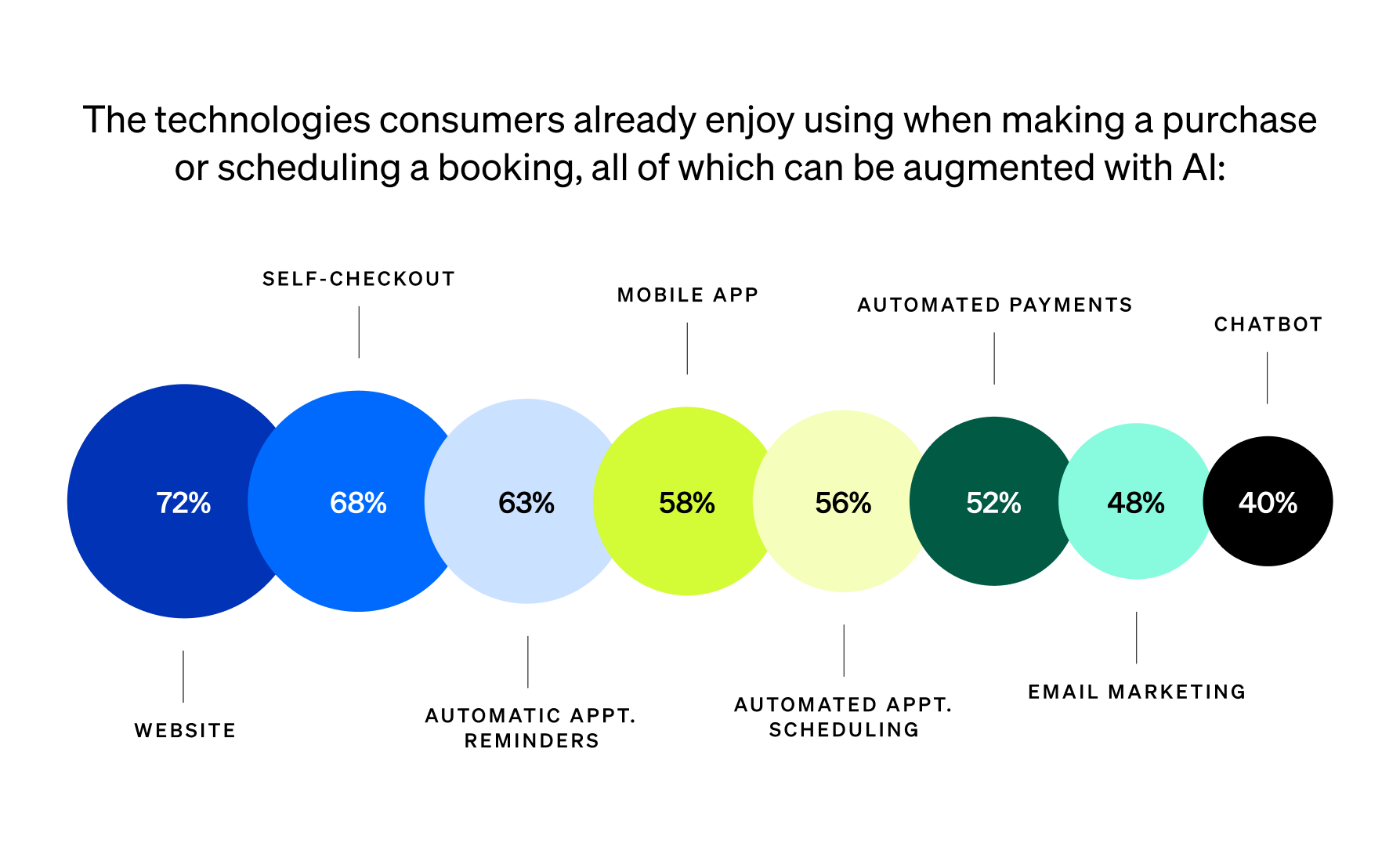
Where will businesses use AI in the future?
Sasha Safarzadeh, Chief Operating Officer of The Chakra Shack gift shop in Laguna Beach, CA, sees Square AI as his go-to resource for planning the future of her business.
“We’ve been changing up the products we order and our staffing based on Square AI. Having the ability to build off of one question into another just really helps us.”
–
Creating true believers
Square AI early adopters have already noticed improvements as the technology adapts with each interaction.
“I’m of the generation that initially wrote off AI,” says Chip Adkins, owner of Piper’s Ice Cream Bar in Covington, Kentucky. “But I have to say it is growing on me. I still verify everything it says, but I find that if I carefully choose the tasks I want it to accomplish for me, I’m saving time and energy.”
And that time and energy that AI and technology saves can be redistributed to the vital aspects of your business: the human touch. Whether that’s pitching in during a rush, a leisurely conversation with a customer as they check out, or a more thoughtful approach to community initiatives, business owners note that AI allows them to return to their purpose of starting their company in the first place.
“People get into small business because they have a passion for the end product, not the process of getting there,” says Ryan Prellwitz, co-owner of Vines & Rushes Winery in Ripon, WI. “We’re getting to the point where AI can be your accountant, your business advisor, and so much more, freeing you up to spend time on the parts of your business that bring you joy.”
The ability to save time and resources, while making data-driven decisions about inventory and staffing, provides an avenue to earn more revenue and create a sustainable workplace.
![]()
